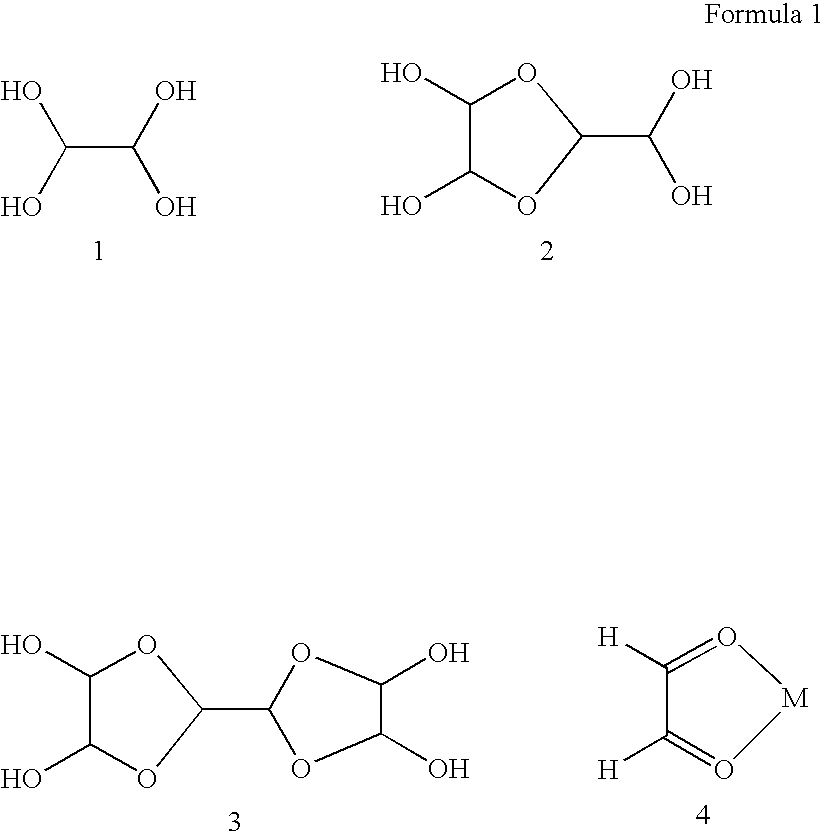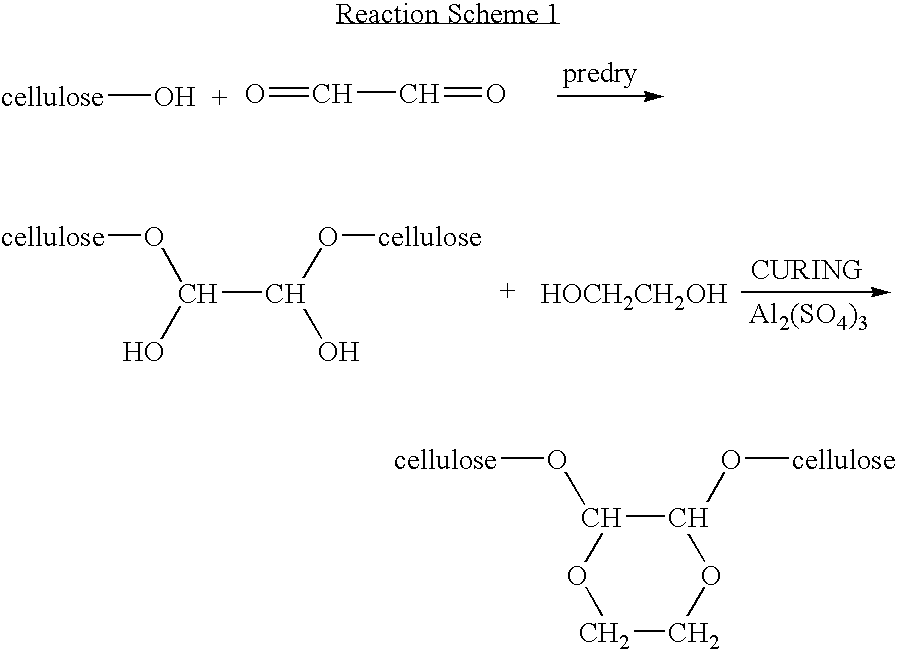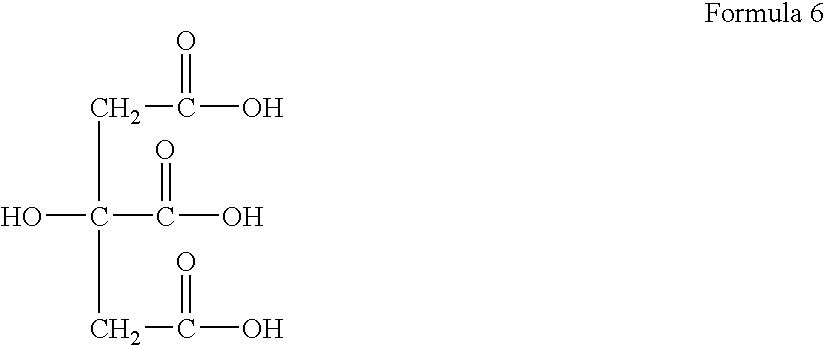Formaldehyde-free durable press finishing agent
a technology of durable press and formaldehyde, applied in the field of durable press finishing agent, can solve the problems of eutrophication of lakes or rivers, change in color tone, human body, etc., and achieve the effect of giving fabrics wrinkle-free performan
- Summary
- Abstract
- Description
- Claims
- Application Information
AI Technical Summary
Benefits of technology
Problems solved by technology
Method used
Image
Examples
example 1
[0031] Gloxal as a crosslinker was dissolved in water at a concentration of 5% by weight, to which aluminum sulfate as a catalyst was added at a molar ratio of 0.04 relative to the glyoxal, thereby producing the finishing solution 1. To the finishing solution 1, each of ethylene glycol and diethylene glycol was added at a molar ratio of 1:1 relative to the glyoxal, thereby producing the finishing solutions 2 and 3, respectively. Then, 100% cotton fabrics are finished with each of the finishing solutions 1, 2 and 3 by a pad-dry-cure method. In this case, the pad was carried out in a 2dip-2nip manner such that a wet pick-up is set at about 95%. The dry is carried out at 85° C. for 3 minutes and the cure at 150° C. for 3 minutes.
[0032] The fabrics which had been finished under the above conditions were measured for their wrinkle recovery angle according to AATCC Test Method 66-1998. Also, their tensile strength was measured according to ASTM D 1682-64 and their whiteness index was mea...
example 2
[0033] The additive of Formula 10 was added to the finishing solution 2 produced in Example 1, at a molar ratio of 0.25-1.5 relative to aluminum sulfate as a catalyst, thereby producing a finishing solution. 100% cotton fabrics were finished with this finishing solution and measured for their physical properties in the same manner as in Example 1. The results showed that the wrinkle recovery angle of the finished fabrics was gradually reduced with an increase in concentration of the additive, but higher than that of fabrics finished with the prior durable press finishes. Also, it could be found that their tensile strength and whiteness index were gradually increased with an increase in concentration of the additive. Thus, it could be found that all the physical properties of the fabrics finished with this finishing solution were equal or superior to fabrics finished with the prior durable press finishes. As in Example 1, there was no detection of formaldehyde in the fabrics finished...
example 3
[0034] Glyoxal as a crosslinker was dissolved in water at a concentration of 5%, to which a mixture of magnesium chloride and citric acid as a catalyst was then added, thereby producing a finishing solution. 100% cotton fabrics were finished with this finishing solution in the same manner as in Example 2. In this case, the molar ratio of magnesium chloride to glyoxal was 0.2, and the molar ratio of citric acid to magnesium chloride varied in the range of 0.1-0.5.
[0035] The finished cotton fabrics were measured for their physical properties in the same manner as in Example 1. The results showed that the wrinkle recovery angle of the fabrics finished with the solution of Example 3 was superior to fabrics finished with the prior durable press finishes. But their tensile strength and whiteness index were somewhat reduced, and there was no detection of formaldehyde in the fabrics finished with the solution of Example 3.
PUM
| Property | Measurement | Unit |
|---|---|---|
| temperature | aaaaa | aaaaa |
| temperature | aaaaa | aaaaa |
| temperature | aaaaa | aaaaa |
Abstract
Description
Claims
Application Information
 Login to View More
Login to View More - R&D
- Intellectual Property
- Life Sciences
- Materials
- Tech Scout
- Unparalleled Data Quality
- Higher Quality Content
- 60% Fewer Hallucinations
Browse by: Latest US Patents, China's latest patents, Technical Efficacy Thesaurus, Application Domain, Technology Topic, Popular Technical Reports.
© 2025 PatSnap. All rights reserved.Legal|Privacy policy|Modern Slavery Act Transparency Statement|Sitemap|About US| Contact US: help@patsnap.com



